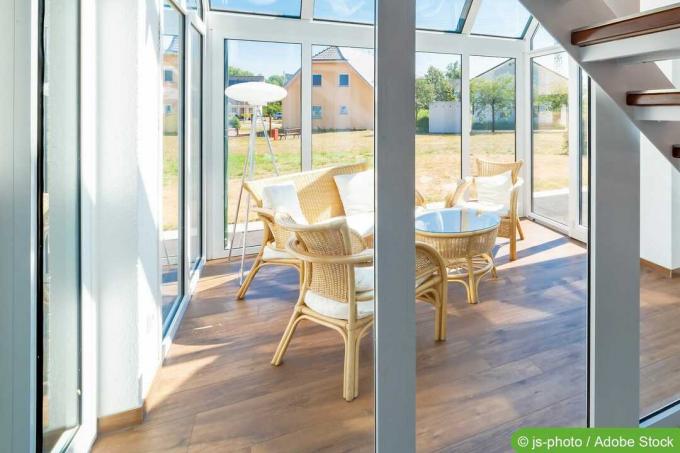

Table of contents
- Union Construction Load - Definition
- Ownership structure in the case of unification building encumbrance
- Use of union building loads
- application
- Unification encumbrance on inheritance or sale
- Deletion of a union encumbrance
- impact on property value
In many cases, builders are restricted by building regulations for a property in the realization of their dream house, which in turn can be to the detriment of building land sellers. Compliance with statutory minimum distances to neighboring properties or compliance maximum building area depending on the plot area are only two possible problem examples. Here, under certain conditions, a joint building encumbrance for neighboring properties can be the solution.
Union Construction Load - Definition
As the term suggests, it is primarily a kind of union of two or more properties. In order for these to be “united”, they must be adjacent properties. A unification building encumbrance is about treating two or more adjacent properties as one property in building law. A unification building load basically requires a building law reason.
For example, property boundaries between the neighboring properties involved are eliminated via the unification building burden. The unification building load always includes at least one so-called "serving property". From this or the property owner, there is a public law obligation to the competent building authority, his property boundary to a neighboring property to dissolve. This means that the neighboring property becomes the so-called "dominant" part and the neighboring border does not have to be taken into account in questions of building law.
Ownership structure in the case of unification building encumbrance
The ownership of the individual plots of land are not affected by a unification building encumbrance. This means that each participating property owner retains his ownership rights to his property to the extent that it was/is registered in the land registry before a unification building load. A unification building load is not entered in the land register. There is also no change in the area of taxes.
Use of union building loads
example 1
Mr. Meier owns a two-family house on his property, in which the apartments are next to each other and each has its own entrance. One side is now to be sold together with the property on the side. A property division makes this theoretically possible. But because the house is not in the middle of the property, its part of the property would be significantly smaller.
For the remaining plot size, the building law states that the built-up area of his half of the house is too large. In this case, a property division would not be possible. However, if a unification building encumbrance is applied for and approved at the same time as the property is divided, the property continues to be considered as one for building regulations even after the division. As the property owner, the house buyer receives the regular entry in the land register.
example 2
Mrs. Schmidt's son can buy the property next door to his mother's at a reasonable price. In order to be able to realize his project of his dream house, he would have to build close to the property line of his mother's property. The latter has no objections, but the building authority does, as the building owner is legally obliged to maintain the minimum distance to the property boundaries of adjacent properties. Here his mother can now submit the obligation to apply a unification building burden to the building authority. In this way, the mother dissolves the border between the two properties and the son no longer has to take this into account when building.
Example 3
Two married couples who are friends have bought two plots of land that they want to build on. For the rear property there is no access from the street for development. This means that the lines can only get into the back via the front property. Here the couples could agree on a so-called easement, which legally and permanently establishes a structural transfer over the first property. In order to save costs, the new property owners decide on a unification building load. In terms of building law, the two plots of land become one plot of land. As a result, only the front property needs to be developed. The rear property can now be connected to it.
application

In general, no binding information can be given about the application for the granting of a joint building permit, since the individual federal states can have different specifications. Accordingly, the following information is only intended as a guide in some respects. Before submitting an application, it is advisable to obtain detailed information about the competent authority.
jurisdiction
A joint construction load can be applied for via the responsible building authority or the building control authority of the municipality.
applicant
Any of the participating property owners can submit the application. Whoever submits the application is usually also the recipient of the invoice for the fees incurred.
In any case, the property owner whose property is "encumbered" has to indicate the readiness for building encumbrance by signing a separate form. In technical jargon, this is referred to as the "construction authority". In some cities/countries, the building contractor becomes one after the application has been submitted by the client invited to a personal appointment to sign and certify it directly to be able to If the contractor lives further away, the signature can be made at a building authority in the vicinity and certified there. Alternatively, the signature can also be certified by a notary.
Documents to be submitted
- Completed and signed application form
- Declaration of encumbrance from the lender with authentication of signature
- Current extract from the land register for all properties involved (must not be older than three months)
- Cadastral extracts of all plots involved
- Site plan in five copies with marking and dimensions of the plot area to be charged
- Depending on the building authority, if necessary, separate cost absorption form for the resulting fees
- If it is commercial or association property, extracts from the commercial or association register must be submitted
machining operation
If all the necessary documents and signatures are available, the building supervisory authority initiates a so-called building permit procedure. The processing time can vary greatly depending on the workload and individual cases. On average, a processing time of between four and six weeks can be expected.
If the application is approved, an entry is made in the register of building encumbrances and the association building encumbrance becomes legally binding.
Costs
Depending on the community, administrative effort, economic value or other building load benefits, the costs are usually put together individually. They vary between 60 euros and 500 euros. The reimbursement of fees is also due if the landlord would change his mind after the application has already been submitted and does not sign the declaration of land encumbrance. It is possible to request written information about entries in the register of building encumbrances. Here again a fee between 15 euros and 50 euros is due.
Tip:
The result of the building permit procedure is communicated to the applicant in writing and at least the entry in the register of building encumbrances to the building authority. This is already binding and the unification building load is legally binding, so that additional proof from the building load directory is not required.
Unification encumbrance on inheritance or sale
If there is a change of ownership of the property through sale or inheritance, for which the obligation of the property association was entered into, this remains unaffected and continues to exist. This is to protect the owner of the "dominant" property. This is to prevent that, in the event of a possible omission of the obligation, the neighboring property in In the worst case, you have to demolish your house or parts of it if this is built over the (former) property line became.
Deletion of a union encumbrance
If a joint building encumbrance is entered on one or more properties, it can be deleted under certain conditions. The following requirements must be met:
- The originally planned construction does not take place (loss of reason)
- There is no public interest in maintaining a unification building encumbrance
- Approval from the responsible building control authority is required
impact on property value

Since at least two properties are involved in a unification encumbrance, this usually means that one part suffers a disadvantage and the other an advantage. The "dominant" property has the advantage, which benefits from the dissolution of the property boundary to the neighboring property. The result can be an increase in the value of the property.
The property for which a building encumbrance has been registered loses its right to a clear demarcation from the neighboring property. This can sometimes reduce the value of a property.
Depending on the individual case and development, an impairment does not always occur. It must be taken into account that a unified building encumbrance offers more flexibility in the development, which would not be possible without this building law agreement. Whether and to what extent which property has to be expected with a decrease or increase in value can be determined by an expert and a corresponding report.
 Home editorial office
Home editorial office
Learn more about property

When does the conservatory count as living space?
Whether and to what extent the conservatory is part of the living space is important for the calculation of the living space. The area can have a significant impact on the rental price or the applicable property tax. The basis used for the calculation is important. Here you will find all information on the subject.

Does the stairwell count towards the living space?
Of course, real estate agents, house sellers or landlords want to state the living space of an apartment or house as high as possible, as this drives up the price. But is it even permissible to include stairs in the calculation? Read here whether the stairwell is part of the living space.

Rainwater fee: what is it?
Whether homeowner or tenant: In Germany, every private household has to pay the so-called precipitation water fee, also known as the rain fee. Who has to pay this fee, how is it calculated and can it possibly be avoided?

Is the terrace part of the living space?
Whether and to what extent the terrace is part of the living space plays a decisive role in many respects. It is particularly important for tenants to know the basics of the calculation and to be able to check them if necessary.

Summer Storms: What Does Good Home Insurance Cover?
Summer storms, and severe weather in general, are increasing in both frequency and intensity. This can cause significant damage to the house or apartment. It is all the more important that these are covered by the selected household contents insurance.

Bin full: what to do with the garbage? | 5 ways
What to do if the garbage can is (again) too full? For many, it is tempting to leave their rubbish at a neighbor's or on the side of the road. But is that actually allowed? Find out how and where to dispose of excess garbage in this post!

